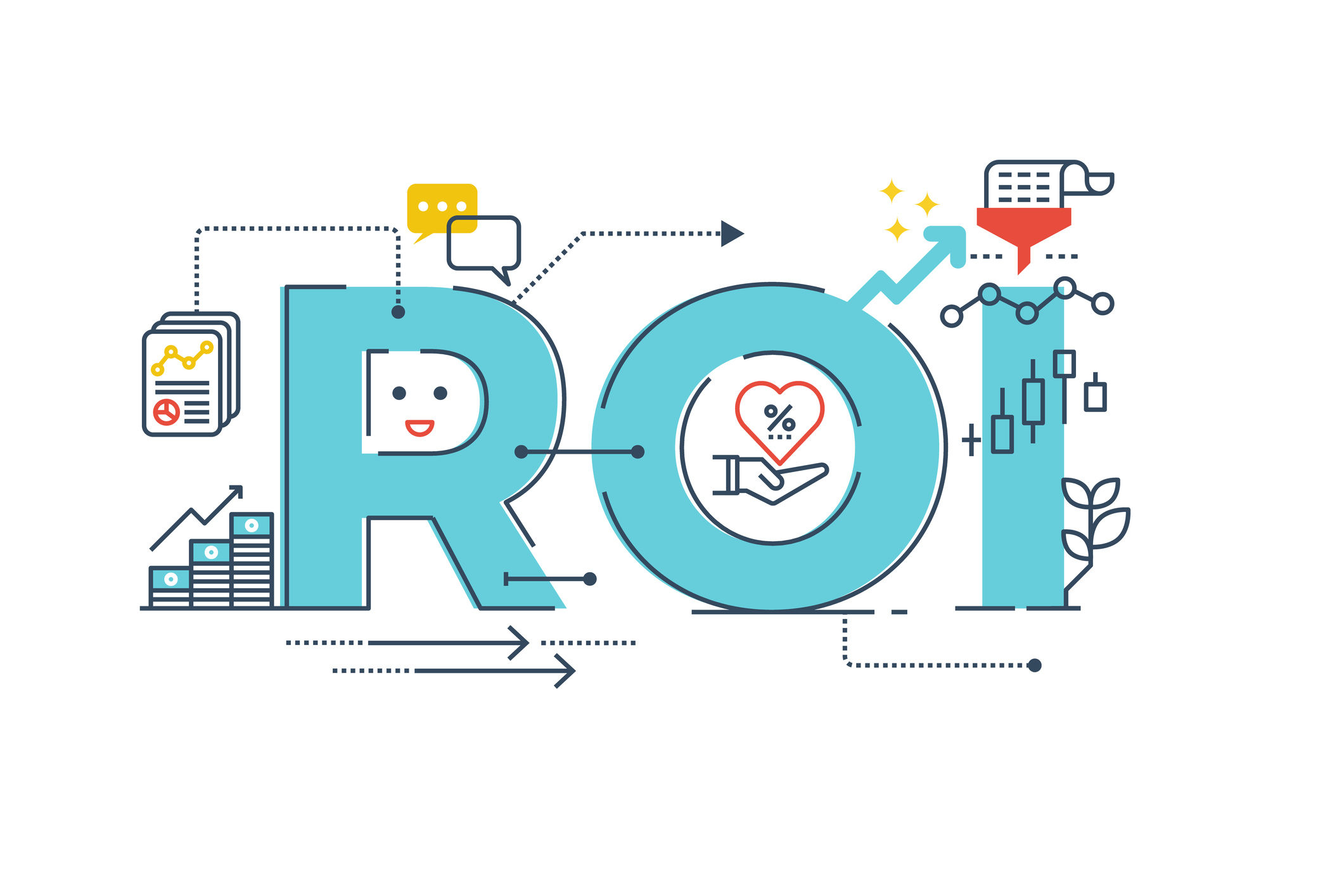Marketing and advertising agencies have been a part of the marketplace for more than two centuries, helping product manufacturers and service providers connect with those in need of what they have to offer. Agencies like ours exist symbiotically with business – when our efforts do well in promoting a business, the business succeeds. “We succeed when you succeed” is more than a throwaway slogan – it’s the truth of agency work, and words we live and die by.
Retaining a client or sticking with an agency often comes down to deciding how beneficial the relationship is for both parties. But how can a client really measure the success of their marketing agency? What is the right way to tell whether or not the investment is worth it? While many would say that it simply boils down to the ROI – return on investment – the reality is that the answer isn’t always quite so clear cut.
First Things First – Marketing Is an Investment, Not an Expense
Before we dive in, it’s important to first dispel the notion that anything you spend on promoting your brand, your business and what you have to offer the market is a cost. Most organizations understand that marketing is an investment – something you put money into for the betterment of your organization and the growth of your business – and not an expense. It’s why they call it “return on investment” and not “return on expense,” after all.
Promoting your brand and your products or services is how new customers learn about you and what you offer, and how existing and previous customers keep you in mind for future needs. Being at the top of mind within consumers’ minds is a must. If they need something you offer and don’t think of you first – or at least know of you and what you can provide – you’ve at least put yourself at a disadvantage if you haven’t outright lost a potential sale.
Marketing helps you succeed, and marketing agencies offer experience in the best ways to find that success for your business. They deliver knowledge and expertise with different types of advertising and creative staff capable of concepting and delivering a unique and fresh idea for you and your organization. You wouldn’t ask just anyone to help you put an addition on your house or repair your car – you’d want an expert. When it comes to promoting brands and business, investing in a marketing and advertising agency that works on your behalf is an investment in your organization’s growth and development.
A Partnership for Measurable Success
Now, to really gauge how successful any given marketing or advertising efforts are, it often comes down to the numbers – but which numbers? The definition of success can vary, depending on the specific goals of the client. Do you want to increase product sales? Drive more queries to the website? Get more foot traffic at your storefront or make the phone ring more often?

The goal of the campaign has to be well understood before you start, and agencies and clients need to trust one another and provide transparency in the process. A client needs to be able and willing to share information like customer inquiry and sales data with the agency – this allows the agency team to track what campaigns or strategies are working and to what extent. On the other side, agencies need to be transparent about the costs for different services and deliver the trackable data available from campaigns run on digital or third-party networks.
To succeed, clients and agencies need to work as partners, sharing data, collaborating on ideas and cooperating on measuring results. For campaigns to be fairly evaluated, clients need to know what was done and agencies need to know how it impacted business. Together, each approach can be assessed, improved and refined, making each new campaign better than the last and helping to grow business.
Where Things Fall Apart
If you ask five companies or five agencies why their last relationship with the other failed, you’ll probably get five different stories. Maybe the agency cost too much or they weren’t transparent enough, or perhaps the client failed to pay bills on time or never provided any concrete input on a project. At the end of the day, though, many client and agency relationships fail for the same reason as personal relationships – a lack of communication and understanding.
Working with an agency offers many benefits for a client. Agencies have staff that are experienced and knowledgeable in the marketing world and in a range of advertising strategies, creative development approaches, content and copywriting, digital and traditional media and much more. Having an agency puts all this at the fingertips of a client, allowing them to adapt and grow in any channel without having to hire an in-house staff to cover all the different avenues.
But the partnership works both ways. Clients need to know that their agency can react to their requests and are able to deliver results on time and on budget. At the same time, clients need to respect that agencies have costs of doing business, and when a client requests a project, there will be a price attached to that work. That can include a range of different fees, as well, depending on the type of campaign – research and concepting, printing costs, media purchasing and placement, creative or technical development, project management and more.
But What About ROI?
That all said, measuring the success of your campaign won’t always boil down to a clear-cut gain in profits. The typical calculation for an ROI holds that an organization’s gross profit during a given campaign minus the marketing investment divided by the total of that investment and then all multiplied by 100 should result in a campaign’s ROI percentage. Or, in more clear terms:
However, that doesn’t tell the whole story. While that math works great for a campaign that’s directly tied to increased sales of products or services, it doesn’t work when the campaign has a less tangible goal. Is your goal to increase awareness in the marketplace or expand your reach into a new territory? You can’t necessarily measure that in increased revenue. Instead, that may be better gauged by surveying people in the area, tracking visits to your website from that area or using a new phone number that’s local to the region and counting call volumes.
The standard calculation of ROI also doesn’t factor in things like residual customer values. For example, if a campaign brings 10 new customers to you, and two of them go on to make regular annual or quarterly purchases, that grows not only a company’s immediate sales, but develops long-term returning customer value. Similarly, growth in search engine rankings or increased website traffic doesn’t necessarily show an immediate gain, but instead sets a foundation for long-term growth and value by improving visibility and market awareness.

A Different ‘R’ for ROI
At the end of the day, perhaps it’s not so much a “return” on investment that should be the target term in “ROI,” but instead “results.” What success is can take many different forms depending on a campaign’s goals, so for a client to gauge the merits of an agency partnership on financial gains alone isn’t always the appropriate measure. Instead, look at what the agency delivers for investment and decide if that meets or exceeds the goals of a given marketing effort.
Growing an email list or placing a billboard doesn’t necessarily tie immediately to a financial growth. However, both offer long-term benefits. Having more customers on an email list increases the reach of digital marketing campaigns, allowing for more current or prospective customers to be reached with future incentives and promotional materials. Increasing awareness of your brand in the community doesn’t mean they will need your product or service immediately, but it does make them aware of who you are and what you offer when they do need you. Marketing isn’t just financial gains alone – sometimes it’s playing the long game and investing on efforts today that make campaigns in the future more successful.
If both the client and agency agree on what a campaign is setting out to do and what success looks like for any given effort, it’s easy to determine if a campaign is delivering ROI – results on investment. Success isn’t always measured by the same yardstick. By deciding what success looks like, clients and agencies can thrive together.
This article was originally posted on the J. Fitzgerald Group blog.
Read more:
